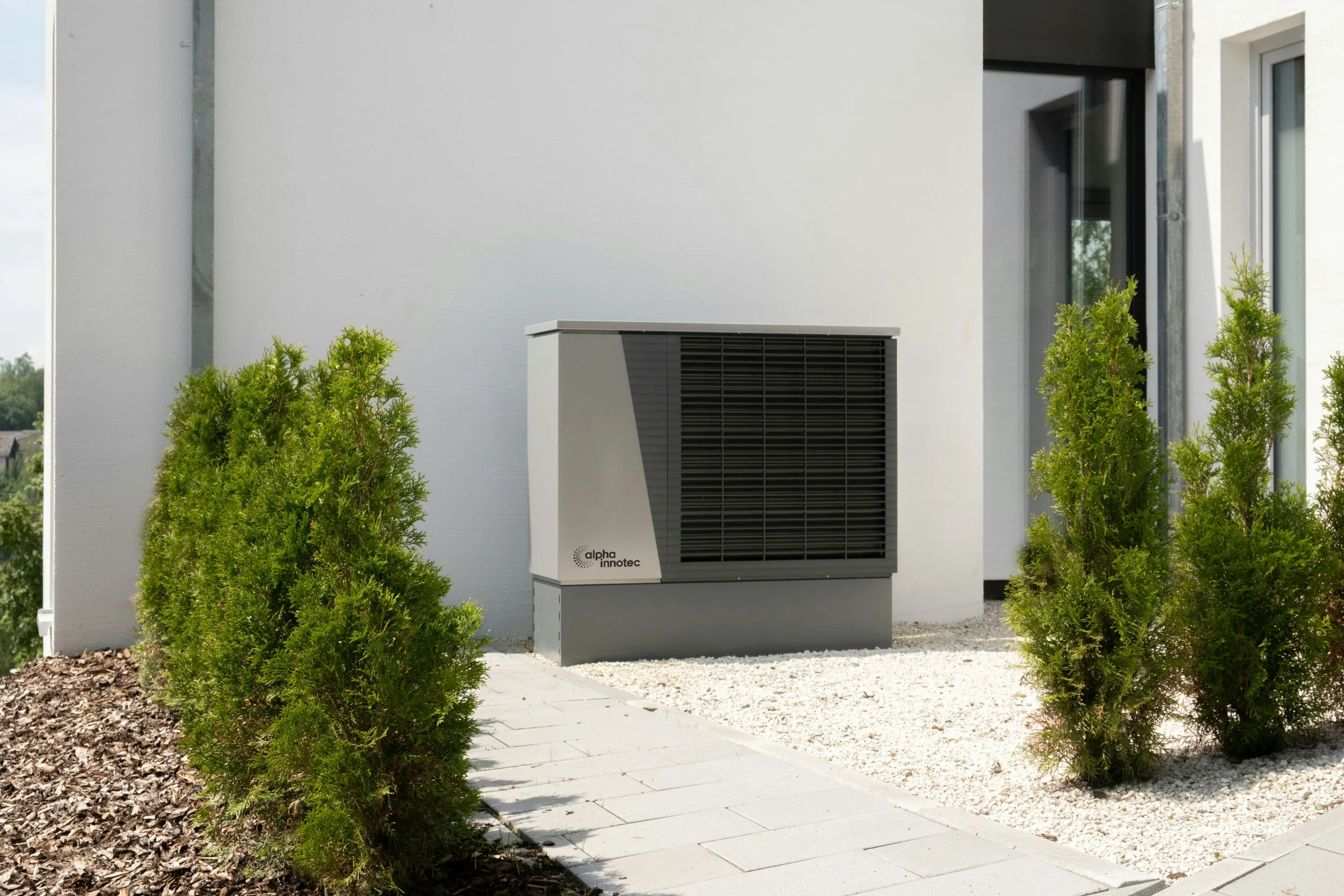
Air-source heat pumps are gaining popularity as an energy-efficient and environmentally friendly way to heat homes across the UK. With increasing energy prices and the urgent need to reduce carbon emissions, many homeowners are turning to sustainable heating solutions that are not only cost-effective but also help protect the planet.
In this in-depth guide, we’ll explain what air-source heat pumps are, how they work, and the many benefits they offer. We’ll also look at whether this technology is suitable for your property. At Green Homes Group, we don’t install heat pumps ourselves, but we are expert surveyors with the knowledge to assess your property’s suitability. We also have a trusted network of certified installers we can recommend to ensure you get a high-quality installation.
An air-source heat pump (ASHP) is a renewable heating technology that captures heat from the outside air and uses it to warm your home and water. It functions similarly to a refrigerator in reverse, extracting ambient air, converting it into usable heat, and distributing it efficiently throughout the home.
There are two main types: air-to-air systems, which deliver warm air directly via indoor units, and air-to-water systems, which heat water that circulates through radiators, underfloor heating, or a hot water cylinder. The latter is more common in UK homes due to its compatibility with traditional heating systems.
ASHP systems typically comprise a compressor, heat exchanger, and refrigerant. The compressor increases the temperature of the refrigerant, the heat exchanger transfers that heat to your system, and the refrigerant itself absorbs and releases thermal energy. Though the technology might sound new, the basic concept has been around since the 19th century and has evolved into a cornerstone of sustainable energy strategies.
An air-source heat pump operates through a thermodynamic process that captures thermal energy from the outside air, even in low temperatures. The outdoor unit draws in this air and passes it over a refrigerant, which absorbs the heat and transforms into a gas. This gas is then compressed to significantly increase its temperature before releasing its heat indoors via another exchanger. After releasing the heat, the refrigerant condenses back into a liquid and the cycle repeats.
Thanks to this process, modern heat pumps achieve a high level of efficiency. For every kilowatt of electricity used, the system can generate around three kilowatts of heat, giving it a coefficient of performance (COP) of 3 or more.
Air-source heat pumps offer a wide range of advantages:
Determining whether an ASHP is suitable for your home involves evaluating several factors. Homes with robust insulation retain warmth more effectively, making the heat pump more efficient. The existing heating system also plays a role—underfloor heating or newer radiators often complement ASHPs better than older systems.
Your property’s layout and size determine the system’s ability to distribute heat evenly. Outdoor space is another key consideration, as the unit needs sufficient airflow and a location with minimal obstruction. Depending on your hot water needs, a larger cylinder may be required to ensure adequate supply.
At Green Homes Group, our surveys take all these elements into account. We deliver precise, property-specific advice to help you make informed decisions.
When you book a survey with Green Homes Group, you can expect a thorough, professional assessment tailored to your property. Our team evaluates each room to understand your heating needs and performs heat loss calculations to identify where energy efficiency improvements can be made.
Once complete, we compile a detailed report covering your home’s heating profile, the expected performance of an ASHP, and the cost-effectiveness of implementation. From there, we match you with one of our trusted installers—each vetted for certification, reliability, and experience.
Though we don’t carry out installations ourselves, we help you prepare by explaining the typical process:
The full process usually takes between two to five days, depending on your property’s layout and complexity.
Proper maintenance is crucial for keeping your ASHP running efficiently. This includes an annual service, filter cleaning, and refrigerant checks. These small tasks help prevent issues and maintain performance.
With regular upkeep, you can expect your heat pump to last between 15 and 20 years. Modern units are designed for longevity and resilience, making them a sound investment in the long term.
The initial cost of installing an ASHP can range from £7,000 to £13,000, depending on your home’s needs. However, running costs are generally lower than conventional heating systems due to superior efficiency. Government support in the form of grants, such as the Boiler Upgrade Scheme, helps offset the initial expense.
Over time, these savings can add up. For households switching from oil or electric heating, the reduction in energy bills can be particularly significant, offering a return on investment over the system’s lifespan.
Many myths surround heat pump technology. A common one is that they don’t perform well in cold weather, but modern systems are effective even at temperatures as low as -15°C. Others believe the units are noisy; however, the latest models operate quietly, often no louder than a household fridge.
There’s also a misconception that heat pumps are only suited to new builds. In reality, with the right upgrades and surveying, they can be retrofitted to most older properties, allowing a broader range of homes to benefit from this green technology.
Air-source heat pumps offer a clean, efficient alternative to traditional heating. They align perfectly with the UK’s push for net-zero and provide tangible benefits for homeowners—lower bills, improved comfort, and a reduced carbon footprint.
With Green Homes Group, you receive expert advice from the start. Our surveys help you understand your property’s potential, and our trusted installer network ensures a smooth transition to this advanced technology.
If you’re considering making your home greener and more efficient, start by booking a free home survey with Green Homes Group. One of our expert surveyors will visit your property, assess its suitability, and provide a tailored report.